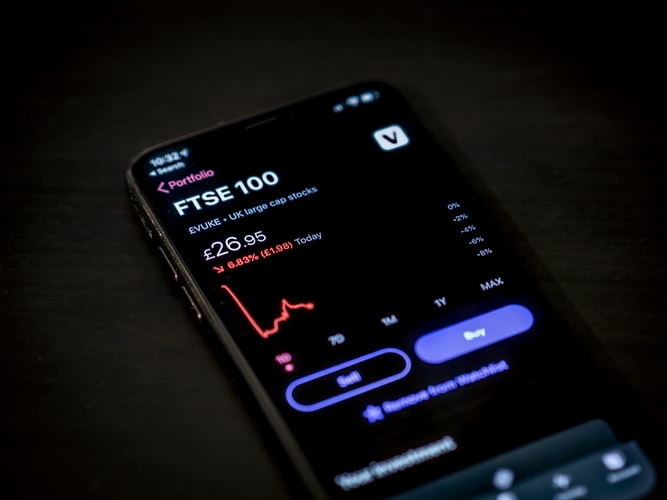This article has been written by Jayant Saxena, pursuing the Certificate Course in Capital Markets, Securities Laws, Insider Trading and SEBI Litigation from LawSikho.
Table of Contents
Introduction
India is by far one of the countries most impacted by the COVID-19 pandemic. This virus has not only impacted the lives of the people but has also ruined their businesses in different sectors. Since MARS 2003, coronavirus has been considered another deadly virus that has constantly worsened the economic condition of our country. Businesses were either shut down or were not performing well which led to many ramifications.
Though it was difficult for companies to raise capital under such circumstances, the constant efforts from our government by infusing huge capital in our economy has surely proved a vital step. Not only infusion of capital has helped, but many incorporations into our laws such as amendments in the Companies Act, 2013, SEBI relaxations and the Insolvency and Bankruptcy Code (“IBC”) Amendments in respect to distressed entities, has widely helped our stressed investors to deal with this uncertain crisis in a better manner.
The stock market is expected to witness significant growth once the crisis is over. Initial Public Offering (“IPO”) activity has not only grown in India or the USA but also in many countries. Even after these challenges in raising funds, Indian exchanges experienced the highest IPOs operation as the country announced 90 IPO releases, which raised USD 3.9 billion in the first half of this year, while the United States witnessed 101 IPOs in the first half of this year.
Let us look at the few concepts which may require implementation in 2021:
Reshaping Business Portfolios
The capital is being allocated more into the value losing sectors rather than being allocated into value-creating sectors. Of India’s $1.1 trillion invested capital in the last decade, the biggest chunk, 84%, is concentrated in three value-losing sectors, segmented into 30% for the domestic services, 37% for the energy and materials sector, sector and 17% for the financial services sector.
Just 16% of the invested capital went into value-creating segments such as knowledge-intensive (Pharmaceuticals, IT, medical), consumer products and services, and capital goods. The executives of large corporations are planning to shift gears from value losing sectors to value-creating sectors. One of the important reasons is the reduction in manufacturing capacity utilization level.
Capacity utilization refers to how much of the output capacity of the plant/manufacturing unit is being used. Capacity utilization metrics are important both for assessing the performance of an organization concerning the use of its capital and for preparing for the future. As reported by the Reserve Bank of India (“RBI”), the manufacturing capitalization in October-December 2019 was 68.6% which means that 31.4% of the capacity of these large companies was still lying unutilized.
These metrics were recorded before the pandemic which signifies that the situation will worsen during the lockdown due to the lower consumption of products by people. It is time for the owners and CEO’s to shift the deployment of capital and resources to value-creating sectors such as enterprises like a digital business, health and wellness, insurance, renewables, and advanced mobility which requires minimal capital requirements. Companies should also consider including FMCG products in their existing portfolio. Mr. Sanjiv Puri, the MD of ITC witnessed a significant surge in his FMCG portfolio.
Resilient balance sheets and cost structures
Dealing with the debt crisis of companies is another aspect to administer for corporations. The Gross Non-Performing Assets (NPA) has risen for a few companies exponentially which make it even more difficult to finance growth. 43% of India’s long-term debt is owned by firms with an interest-coverage ratio of less than 1.5. If it is less than 1 it means that the company has high debts and could get bankrupt whereas if the ratio is less than 1.5 the status of the company is uncertain and therefore may face obstacles in receiving further credit from prospective creditors.
A ratio above 1.5 is considered good and signifies that the company is on a good-earning curve. COVID-19 will act as a dual burden of dropping sales and weakening debt servicing capability leaving India’s corporate balance sheets completely deteriorated. Non-performing loans held by India’s banks amounted to some Rs. 10 lakh crores ($130 billion) at the end of 2019. Amidst these debt crises, it has become highly advisable for corporations to build a resilient balance sheet which can be achieved by equity financing mechanisms. About $50 billion of foreign direct investment (“FDI”) equity flowed into India over the year ending in March 2020 and a range of high-profile FDI investments was announced thereafter.
Another aspect to deal with the debt crisis is the ramifications in fixed cost plans of the companies. The fixed costs of large Indian companies amount to 49% of their cost base on average across sectors. To operate the business comprehensively, base costs are involved. Once the base cost is established, the fixed costs do not change over the life of an agreement. Examples of fixed costs include rental lease payments, salaries, insurance, property taxes, interest expenses, depreciation, and other utilities. The proportion can be as high as 60% to 70% in service sectors and 20% to 30% in manufacturing. Building a leaner cost mechanism may solve this problem.
How can that be done? Many corporations believe that opting for digital technologies and outsourcing can solve this problem. Digitalization has never been expected to rise the way it is being utilized during the phase. Almost every entity in today’s scenario is digital resistant. According to the McKinsey Global Institute, equipping the IT-BPM industry with emerging technology such as artificial intelligence (“AI”), analytics, cloud, and cyber protection could produce $205 billion to $250 billions of gross value added (“GVA”) in 2025, approximately double the $115 billion generated in 2017–18.
Introduction to Social Stock Exchange (SSE)
Many social enterprises in India have significant potential to impact Indian Society but are unable to last longer due to the lack of funding. Over 2 million social enterprises/organizations that emphasize social or environmental goals over their profits are offering direct employment and skills training to underserved communities, with women accounting for up to 65% of their part-time workforce.
However, their importance to our economy has still not been properly recognized and is not part of the development of the Indian entrepreneurial ecosystem. These social enterprises can be divided into two categories: Non-Profit Organization (“NPO”) and For-Profit Social Enterprises (“FPEs”).
NPOs are funded primarily by philanthropy, impact funding, incubator, or startup programs whereas FPEs mainly target concessional financing at lower market interest rates and equity-like investments.
What is the Social Stock Exchange and how will it help?
Social Stock Exchange (“SSE”) is a mechanism proposed by SEBI this year to help the social enterprises in listing their securities on a market where they will be exposed to the general public and especially to those people who are willing to take part in a genuine social cause. This will allow these enterprises in raising capital and in exploring the better option with less risk instead of relying on ad hoc funding like donations or grants.
How will SSE work in India?
The Indian SSE will support innovative outcomes-based financial instruments and bonds such as Pay for Success (“PFS”) bonds, Development Impact Bonds (“DIBs”), Social Impact Bonds, Sovereign Wealth Funds, and Zero Coupon Zero Principal Bonds using which NPOs can finance their operations.
Strict screening of investors shall be administered and there shall be a minimum duration on prescribed investment. Investors shall be in strict compliance with the Patient Investor Code of Conduct which shall help them stick to their social mission. The above-listed instruments shall be not for quick returns so it excludes the category of investors who shall be seeking short-term profits.
NPOs must also get themselves registered with Information Repositories (“IR”) like other NPOs such as Credibility Alliance, Niti Ayog, Darpan, and Guidestar India. This SSE mechanism is yet to come to India and if such happens, it will encourage many social enterprises and investors in infusing the capital to move forward with their social milestones.
Which countries have SSE mechanisms and what are their objectives?
Currently, many countries are following this mechanism to support their social enterprises established in their countries. The 1st one and the most prominent one is the SSX of the United Kingdom. It was launched in June 2013 by their Prime Minister. Other ones are BVSA of Brazil, SUX of Canada, Impact Exchange of Mauritius, IIX of Singapore, and SASIX of South Africa. SASIX serves as a private stock exchange applying the same comprehensive due diligence considerations to social businesses/enterprises.
BVSA encourages interaction between investors and non-governmental organizations which goes through a thorough screening procedure and the exchange regulates the end use of the funds generated so that they are only used for the specified objectives whereas SVX and IIX allow businesses to raise money by crowdfunding and private placement of shares to institutional and approved investors.
Look out on Mutual Funds
The Covid-19 crisis has created a lot of liquidity issues with the debt market. Franklin Templeton AMC is one of the best fund houses which is known for handling the debt schemes but unfortunately, in April 2020, they had to wind down their 6 debt schemes due to the liquidity issues and numerous redemption applications from the investors during a time when the debt market was already under a turmoil.
There was a lot of redemption pressure from the investors as everyone wanted to redeem their units that were invested in these bonds. Another reason was investments done by Franklin into groups that did not perform well and ended up being liquidated. Such groups were IL&FS, Reliance Communication, Vodafone Idea, and Essel Group. Keeping the liquidity issue in mind, RBI even injected Rs. 50,000 crore line of credit to deal with this issue. This example signifies that debt schemes are not always safe to park your money especially during such a crisis and investors should stay invested rather than panicking as advised by many financial analysts.
There were other few changes introduced by SEBI which shall be applicable from January 2021.
Allocation in Multi-cap Funds
SEBI announced new regulations on the allocation of portfolios for multi-cap stock mutual funds that made it necessary for these funds to have at least 75% of their equity and equity-related investment allocation compared to the existing 65% requirement. Besides, the Fund would have to invest at least 25% of its portfolio in large-cap, mid-cap, and small-cap firms. This will ensure more stability in funds as the large-cap stocks will also be added to the list which will provide stable returns. Earlier, the fund managers were not including large-cap stocks in their portfolios.
Tool Risk-o-meter
Risk-o-meter is a tool that was introduced in 2015 to measure the risk associated with any specific mutual fund scheme. Earlier, the risk used to define the category of the fund instead of the actual portfolio. The new risk-o-meter defines the actual portfolio by including 3 more categories other than the previous. They are:
- Low Risk
- Moderate Risk
- Low to Moderate Risk
- High-Risk
- Moderately High-Risk
- Very High Risk
Within 10 days from the closing of each month, the AMC shall provide monthly evaluations of the risk-o-meter along with the portfolio disclosure on their website and as well as on the site of the Association of Mutual Funds in India (“AMFI”). Any changes in risk-o-meter shall be communicated to the unitholders and history of risk-o-meter changes shall be published at the end of every year. Detailed analysis on this risk-o-meter by any person before applying any scheme is highly advisable as from now onwards it will give a clearer vision of the whole portfolio.
IPO Market 2021
As discussed above, despite the occurrence of this pandemic, the Indian IPO market has witnessed significant growth this year. Many analysts believe that this trend will continue to grow in the upcoming year 2021 as well. The IPO market growth this year has risen to 2.25 times up to Rs. 45,000 crores in comparison to Rs. 20,300 crores in the calendar year 2019. It is anticipated to easily surpass a mark of Rs. 50,000 crores.
Life Insurance Corporation of India (“LIC”), a government entity, is likely to file a Draft Red Herring Prospectus (“DRHP”) with SEBI which thereafter will be eligible to raise capital via IPO.
The overall assets of the LIC had hit a record of Rs. 31.11 lakh crores in 2018-19, a growth of 9.4%. The Company realized a profit of Rs. 23,621 crores from its capital investment in 2018-19. The Government plans to raise Rs. 90,000 crores through the selling of shares in LIC and IDBI Bank, and yet another Rs. 1.2 lakh crore via other disinvestments.
LIC is a majority shareholder in IDBI Bank. The IPO of LIC will be the biggest IPO by far.. Apart from the LIC, the list of upcoming IPOs consists of Kalyan Jewellers, Zomato, ESAF Small Finance Bank, Suryoday Small Finance Bank, RailTel Corporation, Nazara Technologies, Indigo Paints, Samhi Hotels, Stove Kraft and Apeejay Surrendra Park Hotels.
Kotak Mahindra Capital Company (“KMCC”) is very well aware of the rising IPO trend in India as they acted as an investment banker in 15 out of 20 issuances in 2020. The focus will be on the Banking sector as they will be playing a vital role in the above issuances.
Conclusion
The capital market is a vast domain and it is highly unlikely for anyone to cover all the aspects which could affect the Indian market in 2021. Hereby, covering the facets to be looking at in 2021 are expected to bring significant changes and growth. Investors of all categories must consider the above-mentioned elements before entering into the market of CY 21. Growth lies where positivity has striven from negativity. Falling markets, businesses, occupations, companies and homes during these times prepare us for a better future in the safest possible way. There could be a second wave of novel coronavirus or could be something else tomorrow that might dismantle the essence of the market to the core but one thing we all could be confident of is that we will all be prepared for that.
References
- https://www.thehindubusinessline.com/markets/stock-markets/india-recorded-10-ipos-worth-14-billion-in-q1-of-calendar-year-2020-ey-india/article31171481.ece
- https://m.rbi.org.in/scripts/publicationsview.aspx?id=19436
- https://www.mckinsey.com/featured-insights/india/five-priorities-for-corporate-india-in-the-next-normal-after-covid-19#
- https://timesofindia.indiatimes.com/business/india-business/sanjiv-puri-reshaping-itc-for-the-new-normal/articleshow/77883232.cms
- https://www.mckinsey.com/business-functions/mckinsey-digital/our-insights/digital-india-technology-to-transform-a-connected-nation
- https://www.mckinsey.com/featured-insights/india/five-priorities-for-corporate-india-in-the-next-normal-after-covid-19#
- https://timesofindia.indiatimes.com/business/india-business/sanjiv-puri-reshaping-itc-for-the-new-normal/articleshow/77883232.cms
- https://www.mckinsey.com/business-functions/mckinsey-digital/our-insights/digital-india-technology-to-transform-a-connected-nation
- https://indianexpress.com/article/explained/lic-ipo-market-disinvestment-6470795/
- https://www.moneycontrol.com/news/business/ipo/year-ender-2020-16-firms-raise-over-rs-31000-crore-via-ipo-2021-likely-to-be-even-better-6267101.html
LawSikho has created a telegram group for exchanging legal knowledge, referrals and various opportunities. You can click on this link and join:
 Serato DJ Crack 2025Serato DJ PRO Crack
Serato DJ Crack 2025Serato DJ PRO Crack











 Allow notifications
Allow notifications



